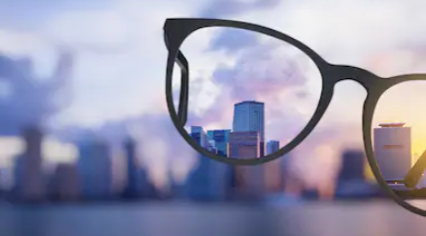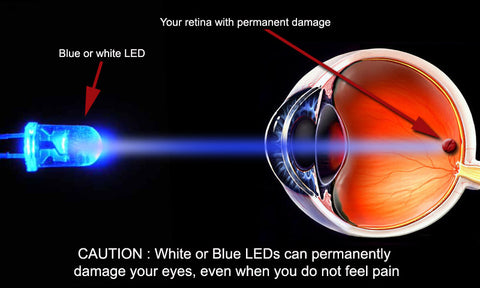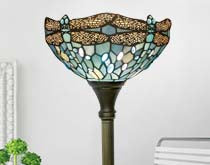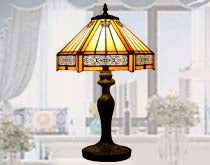10 Symptoms of Eye Damage from Bright Lights
Our eyes, those wondrous windows to the world, are our primary receptors of light and beauty. Yet, in our modern-day lives, inundated by screens, dazzling lights, and luminous displays, they face a constant battle against potential damage.
Understanding the symptoms of eye damage caused by these luminous sources is crucial in preserving our vision and overall eye health. Most importantly, you must know how to shield your eyes from harm's way effectively.
What is bright light meaning?
In the most literal sense, bright light refers to light that has a high level of luminance or intensity. This can be in the form of natural light (like direct sunlight) or artificial light (like that emitted from a powerful LED bulb).
10 bads that bright light brings to the eyes
1. Blurred Vision

One of the foremost signs of eye damage from bright lights is experiencing blurred vision. When exposed to excessive brightness, your eyes may struggle to focus properly, leading to temporary blurriness. This symptom often occurs after prolonged exposure to bright lights, such as staring at screens or looking directly at intense lighting sources.
To prevent blurred vision (a symptom of eye damage from bright lights), make sure to take regular breaks and reduce screen time to reduce stress on your eyes. Consider using softer lighting options to dim your surroundings, such as a Tiffany-style floor lamp, which provides a softer light source.
2. Eye Pain and Discomfort
Bright lights can cause significant discomfort or even pain in the eyes. The sensation might range from mild irritation to intense pain, depending on the duration and intensity of exposure. This discomfort is usually caused by the eye muscles straining to adjust to bright light. This discomfort can be reduced by taking frequent breaks, using anti-glare screens or glasses, and adjusting the brightness of the screen or ambient lighting. To ease eye discomfort, use an anti-glare screen, which, like the diffused light of a Tiffany table lamp, is less dazzling to the eyes.
3. Increased Sensitivity to Light

Increased sensitivity to light, also known as photophobia, can be a distressing symptom often associated with eye damage. This heightened sensitivity makes exposure to even regular lighting conditions uncomfortable, causing aversion or discomfort. Fortunately, managing this sensitivity requires strategic adjustments that can significantly alleviate the discomfort and enhance overall eye comfort.
Bright lights tend to exacerbate photophobia, making it essential to implement practical measures to mitigate its effects. Dimming ambient lighting in indoor settings can help create a more comfortable environment for sensitive eyes. Softening the intensity of artificial lighting or opting for diffused light sources can reduce the impact of bright lights, thereby easing the discomfort experienced by those with heightened sensitivity.
4. Dry or Watery Eyes
Exposure to bright lights can disrupt the natural lubrication of the eyes, leading to dryness or excessive tearing. Dry eyes may feel gritty or irritated, while watery eyes may result from the eyes' attempts to flush out irritants. Using artificial tears or eye drops can relieve symptoms and maintain proper eye moisture, as can the soothing effect of ambient light from Tiffany lamps, which are known for their soft glow. You can try it.
5. Headaches
Intense exposure to bright lights isn't merely discomforting for the eyes; it can also lead to debilitating headaches or migraines for certain individuals. The correlation between bright lights and headaches is often intertwined with eye strain, creating a discomforting collaboration that impacts overall well-being. Fortunately, managing this symptom involves adopting practical measures that can significantly alleviate the discomfort and mitigate its effects on your daily life.
6. Redness and Irritation
The eyes may appear red and inflamed after prolonged exposure to bright lights. This occurs due to the dilation of blood vessels in the eyes, signaling irritation or strain. Taking breaks, using lubricating eye drops, and avoiding prolonged exposure to intense lights can help reduce redness and irritation.
7. Difficulty in Night Vision
Bright lights can adversely affect your ability to see in low-light conditions, such as at night. Prolonged exposure to bright lights can disrupt the eyes' ability to adjust to darkness, making it challenging to discern objects in poorly lit environments. Shield your eyes from excessive brightness to maintain optimal night vision.
8. Distorted Vision or Halos Around Lights

Another symptom of eye damage from bright lights is the perception of halos or distorted vision around light sources. This effect can make lights appear larger or surrounded by a halo-like glare. Reduced exposure to intense lights and regular eye check-ups can help manage this symptom.
9. Decreased Color Perception
Extended exposure to bright lights may temporarily affect color perception. Colors may appear washed out or less vibrant than usual due to eye fatigue caused by excessive brightness. Giving your eyes regular rest and minimizing exposure to intense lights can aid in restoring normal color perception.
10. Appearance of Floaters or Flashes of Light
Eye damage from bright lights might manifest as the appearance of floaters—tiny specks or cobweb-like shapes drifting in your field of vision. Additionally, flashes of light may occur, resembling brief bursts or streaks of light. Immediate consultation with an eye care professional is recommended if these symptoms persist.
How Does Bright Light Damage the Eye?

Imagine the eye as an incredibly intricate masterpiece, finely tuned to perceive the beauty of the world. However, this masterpiece is not waterproof; it faces vulnerability, particularly when subjected to the relentless assault of intense light sources.
When we encounter bright lights, they unleash high-energy visible (HEV) or blue light, which has the remarkable ability to pierce through the eye's natural defenses and penetrate deep into the delicate retina. This direct exposure sets off a chain reaction of oxidative stress, leading to potential harm to the retinal cells—a vital component of our visual perception.
The aftermath of prolonged exposure to this penetrating light isn't just momentary discomfort; it's a cumulative effect that, over time, can contribute to age-related macular degeneration (AMD). This condition, among other vision-related issues, manifests as a gradual decline in central vision, impacting daily activities like reading and driving. Furthermore, the cornea and lens, responsible for focusing incoming light, can also bear the brunt of this prolonged exposure, resulting in discomfort, persistent blurriness, and an array of distressing symptoms.
Understanding the intricate mechanisms at play here showcases the intricate vulnerability of our eyes in the face of excessive brightness. It's a gentle reminder to treasure our vision and embrace measures to shield these delicate orbs from potential harm.
How to Treat Eyes Damaged by Bright Lights: Is There a Remedy?
When addressing eye damage caused by exposure to bright lights, practical strategies and professional guidance often combine to foster healing and relief. While an instant miraculous fix might be a wishful thought, implementing various measures can work wonders in easing discomfort and aiding the recovery process.
1. Rest and Recuperation
Imagine your eyes taking a well-deserved break, basking in a moment of tranquility away from the glaring screens and luminous environments. This simple act of resting your eyes by consciously stepping away from prolonged exposure to screens or bright lights can significantly alleviate strain. Embracing the 'screen break' philosophy by practicing the revered 20-20-20 rule – taking a 20-second break every 20 minutes to gaze at something 20 feet away – can offer respite to your hardworking eyes.
2. The Soothing Touch of Artificial Tears
Picture a refreshing oasis amidst the arid landscape – that's what artificial tears or lubricating eye drops can feel like for your dry, irritated eyes. These gentle solutions help replenish moisture, providing a soothing sensation to combat dryness and irritation caused by prolonged exposure to bright lights. A few drops applied as directed can work wonders in offering instant relief, letting your eyes revel in newfound comfort.
3. Consulting Eye Care Professionals
In times of persistent discomfort or if symptoms persist despite self-care measures, seeking the wisdom of an eye care professional becomes imperative. Picture a compassionate guide navigating you through the labyrinth of eye health. These specialists possess the expertise to diagnose specific issues resulting from light damage and offer tailored solutions. Prescription glasses, specialized filters, or targeted therapies may be prescribed to address individual eye conditions effectively.
4. Exploring Tailored Treatments
Think of tailored treatments as bespoke suits tailored to fit your eyes' needs perfectly. Eye care professionals recommend these treatments specifically to address the aftermath of eye damage from bright lights. Specialized lenses or filters that minimize exposure to harmful light wavelengths can significantly alleviate symptoms and promote healing.
In essence, while an instant miracle cure for eye damage caused by bright lights might not exist, a blend of self-care practices and expert guidance can pave the path toward soothing relief and enhanced eye health. By embracing these measures, you not only aid in your eyes' recovery but also nurture a culture of mindful eye care for a brighter, clearer vision ahead.
How to Avoid Bright Lights from Damaging the Eyes

Protecting your eyes from the potential harm of bright lights involves integrating mindful practices into your daily routine. By adopting healthy habits, you can significantly reduce the risks associated with prolonged exposure to intense lighting sources.
1. Limit Screen Time and Utilize Blue Light Filters
As our lives increasingly revolve around screens, it's crucial to consciously manage our screen time. Limit extended periods of exposure to digital devices such as computers, smartphones, and tablets. Consider using blue light filters or installing anti-glare coatings on your screens. These measures can mitigate the harmful effects of blue light emitted by electronic devices, reducing eye strain and potential damage.
2. Adjust Ambient Lighting
In your home or workspace, optimize lighting conditions to be eye-friendly. Choose softer, indirect lighting sources that evenly distribute light and minimize glare. Position your desk or seating area away from direct sources of bright light. Task lighting with adjustable brightness levels can offer personalized illumination without causing discomfort to your eyes.
3. Embrace UV-Protective Sunglasses
When venturing outdoors, especially on bright sunny days, shield your eyes with sunglasses that provide adequate UV protection. UV rays, both from natural sunlight and artificial sources, can contribute to eye damage. Opt for sunglasses that block 100% of UVA and UVB rays to safeguard your eyes from potential harm caused by excessive exposure to sunlight.
4. Practice the 20-20-20 Rule
Incorporate the simple yet effective 20-20-20 rule into your daily routine to alleviate eye strain. Every 20 minutes of screen time, take a 20-second break and shift your focus to an object placed approximately 20 feet away. This brief pause allows your eyes to relax and readjust, reducing fatigue and preventing the adverse effects of continuous screen viewing.
5. Prioritize Regular Eye Check-Ups
Schedule routine visits to an eye care professional for comprehensive eye examinations. Regular check-ups can detect any underlying issues or changes in your vision early on, enabling timely intervention and preventive measures. Your eye care provider can offer personalized recommendations to address specific concerns and ensure optimal eye health.
By integrating these practical tips into your lifestyle, you empower yourself to proactively protect your eyes from the potential damage caused by bright lights. Remember, nurturing your eyes with mindful habits not only enhances your visual comfort but also contributes to the long-term preservation of your precious vision. Let the harmony of healthy habits and thoughtful eye care illuminate your path to brighter, clearer, and healthier vision!
What can we help you?
Our Tiffany lamp offers healthy light to old people, reducing lighting damage. You can read books under our light or have other activities. We also have various light styles, like Dragonfly Tiffany Lamps, Floral Tiffany Lamps, Flower Tiffany Lamps, Wisteria Tiffany Lamps, and so on. If you don't know how to install the Tiffany lamp, we will provide the video.
Conclusion
Your eyes are priceless treasures, and safeguarding them from the potential harm of bright lights is paramount. By recognizing these ten symptoms of eye damage and taking proactive steps to mitigate their effects, you can protect your vision and promote long-term eye health.
Remember, moderation and moderation again when it comes to exposure to intense light. Prioritize regular eye check-ups and adopt healthy eye care habits to ensure your eyes continue to delight in the wonders of the world, free from the strains of excessive brightness.
Embark on a journey towards a healthier vision by incorporating these preventive measures into your daily routine. Let the brilliance of the world around you be a source of joy and wonder, not a cause for eye discomfort or strain. Together, let's champion the care and well-being of our eyes, the true gateways to our magnificent world!
Related reading: DIY lighting projects for your home























